
Herbert Clark Hoover was an American politician who served as the 31st president of the United States from 1929 to 1933 and a member of the Republican Party, holding office during the onset of the Great Depression in the United States. A self-made man who became rich as a mining engineer, Hoover led the Commission for Relief in Belgium, served as the director of the U.S. Food Administration, and served as the U.S. Secretary of Commerce.

John Brown was an American abolitionist leader. First reaching national prominence for his radical abolitionism and fighting in Bleeding Kansas, he was eventually captured and executed for a failed incitement of a slave rebellion at Harpers Ferry preceding the American Civil War.
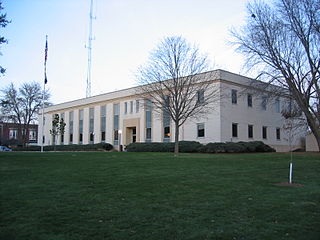
Cedar County is a county located in the U.S. state of Iowa. As of the 2020 census, the population was 18,505. Its county seat is Tipton. The county is named for the Cedar River, which runs through the county.

West Branch is a city in Cedar and Johnson counties in the U.S. state of Iowa. The population was 2,509 as of the 2020 census. It is the birthplace of the only American president born in Iowa, Herbert Hoover.
Frederick Wilhelm Kaltenbach was an American of German ancestry who broadcast Nazi propaganda from Germany during World War II.
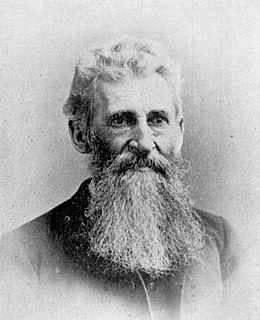
Charles Wachsmuth was a German-American paleontologist and businessman. After emigrating to the United States, he became a renowned expert on the Paleozoic fossil animals known as crinoids. He and his collaborator, Frank Springer, published numerous articles on the subject and built an exceptional collection of crinoid fossils. The culmination of his work was the two-volume "Monograph of the North American Crinoidea Camerata", coauthored with Springer and published posthumously in 1897.

The Government Bridge or Arsenal Bridge spans the Mississippi River, connecting Rock Island, Illinois and Davenport, Iowa. The Iowa Interstate Railroad uses the upper deck of the bridge for its ex-Chicago and Rock Island Railroad route between Council Bluffs, Iowa and Chicago, Illinois. The lower deck carries automobile traffic between the two cities. It is located near Upper Mississippi Mile Marker 483, adjacent to the Mississippi River Lock and Dam No. 15. The current structure is the fourth at this location. The bridges all were built with a swing section to accommodate traffic navigating the river.
The Pease family is an English and mostly Quaker family associated with Darlington, County Durham, and North Yorkshire, descended from Edward Pease of Darlington (1711–1785).
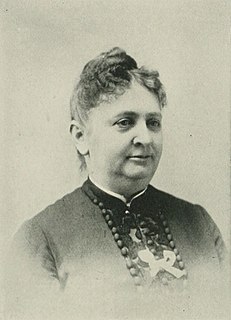
Judith Ellen Horton Foster was an American lecturer, temperance worker, and lawyer. She is thought to be the first woman in Iowa who was actually engaged in practice and the fourth woman admitted to practice before the Supreme Court of Iowa. In her time she was known as "The Iowa Lawyer".
Francis "Fritz" Jennings was an American historian, best known for his works on the colonial history of the United States. He taught at Cedar Crest College from 1968 to 1976, and at the Moore College of Art from 1966 to 1968.

Edwin P. James, a 19th-century American botanist, geologist, linguist, and medical practitioner, was an important figure in the early exploration of the American West. James was also known for his time spent creating relationships with Native Americans in the United States, and also aiding African Americans to escape slavery.

Lawrie Tatum was a Quaker who was best known as an Indian Agent to the Kiowa and Comanche tribes at Fort Sill agency in Indian Territory.

Barclay Coppock, also spelled "Coppac", "Coppic", and "Coppoc", was a follower of John Brown and a Union Army soldier in the American Civil War. Along with his brother Edwin Coppock, he participated in Brown's raid on Harpers Ferry.
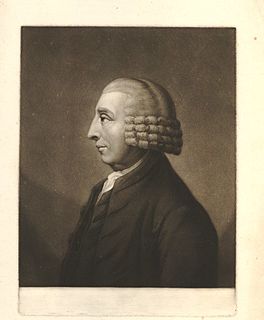
David Barclay of Youngsbury (1729–1809), also known as David Barclay of Walthamstow or David Barclay of Walthamstow and Youngsbury, was an English Quaker merchant, banker, and philanthropist. He is notable for an experiment in "gratuitous manumission", in which he freed an estate of Jamaican slaves, and arranged for better futures for them in Pennsylvania. His legacy was as one of the founders of the present-day Barclays Bank, a century ahead of its formation under that name, and in the brewing industry.

Woodland Cemetery is the oldest cemetery in Des Moines, Iowa, having been established in 1848, before Des Moines was the state capital. It is a municipal cemetery owned and operated by the Des Moines Parks and Recreation Department. It covers 69 acres (28 ha) at the corner of 20th Street and Woodland Ave and is the site of over 80,000 graves.
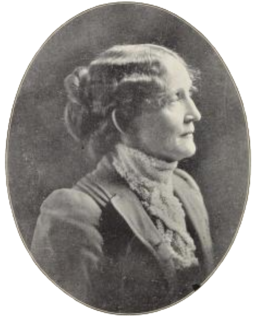
Theodosia Burr Shepherd was an American botanist, horticulturist and pioneer in plant breeding. Called the "Flower Wizard of California", and "The Pioneer Seed-grower", Theodosia was the first woman in California and possibly in the United States to hybridize flowers.
The following is a list of important scholarly resources related to Herbert Hoover, the 31st president of the United States. For recent work see Ellis W. Hawley (2018). For older studies see Patrick G. O’Brien and Philip T. Rosen, (1981), 25–42, 83–99 and Patrick G. O’Brien, (1988).
Capital punishment has been abolished in Iowa since 1965. Forty-five men were executed by hanging in Iowa between 1834 and 1963 for crimes including murder, rape, and robbery.
Nettie Sanford Chapin was a 19th-century American teacher, historian, author, newspaper publisher, suffragist, and activist. Chapin wrote mostly prose. She also wrote on Iowa history, and published several small books herself. While residing at Washington, D.C. for several winters, she wrote concerning society and fashionable Washington circles. In 1875, she began the publication of The Ladies Bureau, the first newspaper published west of Chicago by a woman. Chapin served as chair of the National Committee of the National Equal Rights Party.
George Willis Botsford was an American classicist, ancient historian, and professor of history, specializing in Greek and Roman history. He is known for his textbooks on Greek and Roman history.




















